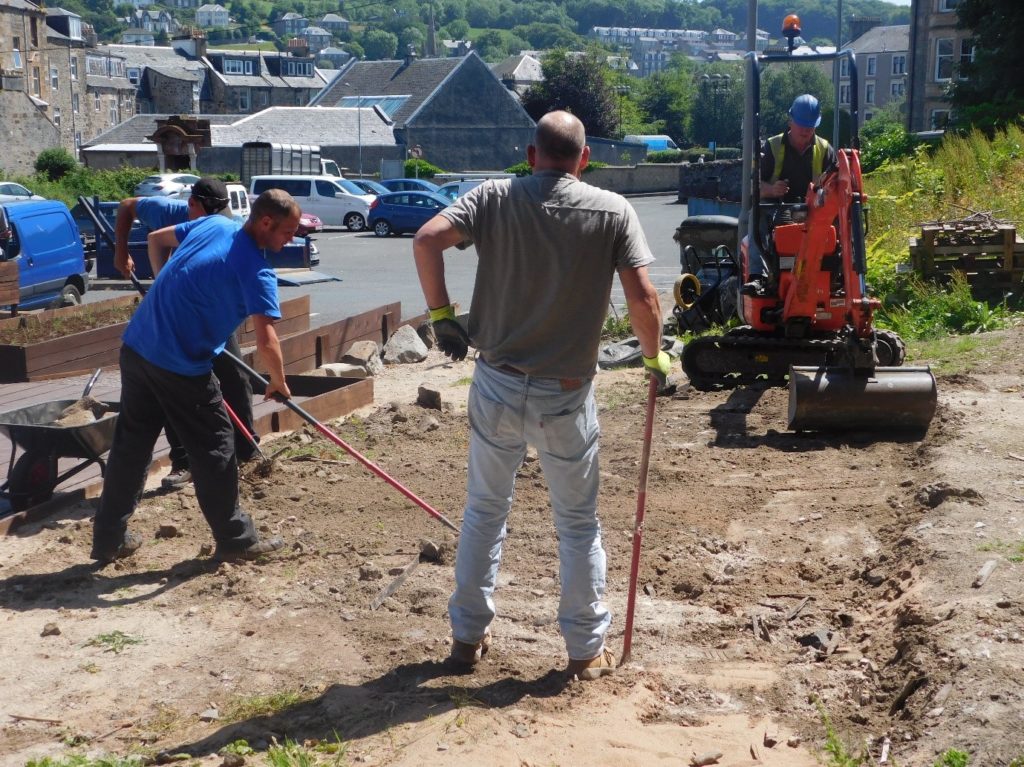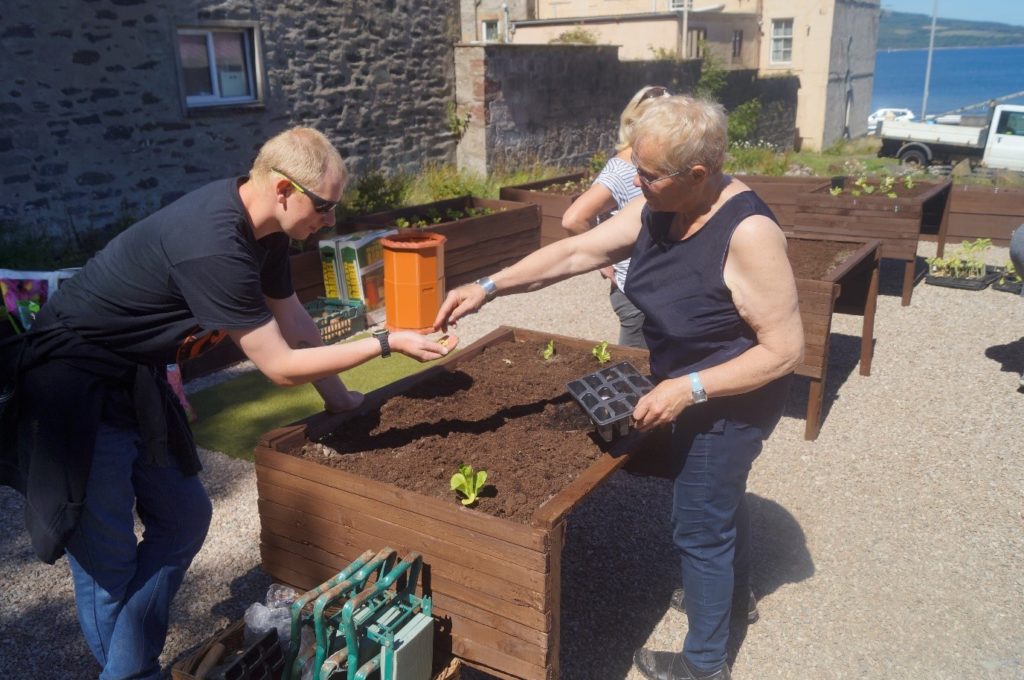Since 2015 the Isle of Bute has been known for hosting refugee families under the Syrian Vulnerable Persons Resettlement Scheme managed by Argyll and Bute Council. At the end of 2018 there were 21 Syrian refugee families on Bute, including 50 children. What is less well known beyond Bute is the many other actions, or “many flowers’, that the community has been developing since 2011.
Reeni Kennedy-Boyle reports from Bute on how the community has come together to tackle depopulation.
Living and working on Isle of Bute is a privilege that needs no reminding. Commuting to work along a shoreline cannot be beat. However the challenge for many islanders is finding employment that provides for sustainable living all year round. For Bute this was one of the factors that drove 11% population decline between 2001 and 2011, and 23% decline in the school roll. This was very bad news for what should be the most vibrant island on the Clyde, if not the Western seaboard.
It was this wakeup call that jolted our community into action. Were the anecdotal problems that people spoke about, the real reasons behind the island economic decline? More crucially what actions could the community take to address whatever reasons became evident? The journey started with a town hall style meeting, as every journey has to start somewhere. It might have been billed as a collective moan but actually it was far more positive. An honest dialogue began to reframe the issues into positive actions. Here is the issue, and here is what is needed to change that. It became very clear that a “many flowers” approach would be needed to turn the island’s fortunes around.
So a recognition that the community were too reliant on big decision being made elsewhere with little involvement from or with the island became an action for people and organisations to become more collaborative, to make decisions about the things that impact on daily lives and to push to ensure public sector decisions were informed with input from the island.

Recognition of dereliction, gap sites and rundown feeling in the conservation zone needed investment. Working with Argyll & Bute Council to develop Townscape Heritage project would not only activate maintaining buildings but would also begin to give people ownership to take on smaller issues in innovative ways. A gap site becomes a space where people could sit awhile and smile within the main shopping street.

A derelict site which once held an impressive church transformed into an accessible, edible garden where food is freely available for all to share. Big actions and small that add together to make Rothesay a more attractive and lively town centre.
Big actions and small that add together to make Rothesay a more attractive and lively town centre.
Acknowledging that the “doon the water” seaside resort days are long gone and considering what new experiences could attract people as well as fostering opportunities for skills sharing, more jobs, entrepreneurialism and business growth. Artists working together to create the Isle of Bute Art Trail – a weekend that showcases the range of creative talent and an opportunity for start-up makers to dip their toes in commercial reality. Setting up a food forum where primary producers, small manufacturers, retailers and hospitality providers could come together to take a holistic and strategic vision and objectives “to create the Isle of Bute Sustainable Food Island, creating a sustainable food and drink economy where all take an interest in, and can access, affordable healthy food”.
Thinking about the Victorian townscape and appreciating it is not always simple to navigate for all people – leading to an ambition to make Rothesay accessible and easy to get around. Ensuring people with understanding take part in steering groups with public sector to inform town planning scoping work. Focus groups set up that led to implementation of wayfinding projects that encourage increased walking and cycling. An active travel forum of people from community organisations and public sector was set up to agree a vision and objectives for Isle of Bute to become Scotland’s foremost bike-friendly island.
Each interaction and action working towards an over-arching vision that Rothesay and Bute will add to the beauty of its environment by offering abundant opportunities for local people to flourish and attract more people to live, work and visit. The journey has begun and already the positive work that is going on is seeing green shoots of progress. Schools rolls up, new businesses opening, manufacturers expanding and a community wide determination to make the most of the opportunities that will come from capital investment in The Pavilion and Townscape Heritage projects.

I feel for the first time in about the last 10 years we are finally seeing some constructive change on the island.
I agree that the artist’s initiatives have helped shape this but also feel we often miss out the real stalwarts of island life, those shops who are open all year round, the businesses that provide the backbone of commerce and lifestyle. The butchers, the bakers, the pubs, the carpet and furniture shops, the florists and clothing shops, the tool shops and the bargain stores. Without these no amount of artist endeavours can revive the fortunes of the island.
We still lack prospects for young people on the island and my fear is also that we simply become the next ‘trendy’ place to buy a holiday home. Arran suffers from this and we should take great heed of their lesson
I also think we have missed a trick with the prom, it would make a brilliant and safe cycling path, there is room for walkers too and this is an ideal area for investment. My children learnt to ride a bike on the prom and we should treasure it, maintain it and perhaps expand it.
I think it be really good for the bute community to do volunteer and do jobs around the island like painting the prom railings and turning gap sites into little gardens